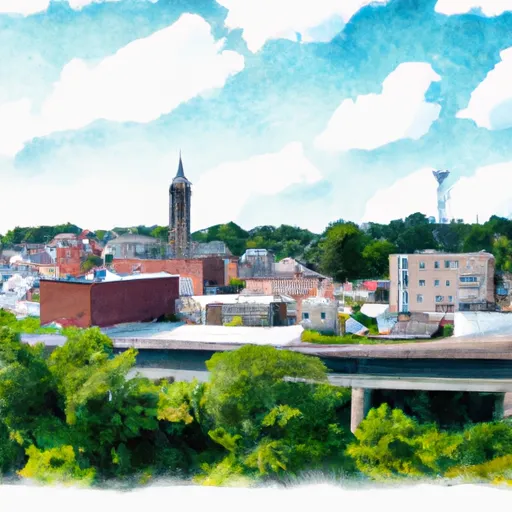-
 Snoflo Premium
Snoflo Premium
Get unlimited access to all our content
With no Ad interruptions! - Start Your Free Trial Login with existing account
Warfordsburg
Eden Index
Climate
8.3
•
Recreation
6.3
•
Community
1.8
•
Safeguard
6.0/10

Warfordsburg, Pennsylvania, is a small unincorporated community located in Fulton County. The region experiences a humid continental climate characterized by four distinct seasons. Summers are typically warm and humid with temperatures averaging around 80°F (27°C), while winters are cold with temperatures dropping well below freezing. Spring and fall bring pleasant and mild weather, making them ideal for outdoor activities.
Warfordsburg sits in the upper Potomac River watershed, which contributes to its diverse hydrology constituents. The area is dotted with several streams and creeks, such as Little Tonoloway Creek and Tonoloway Creek, which provide opportunities for fishing, canoeing, and kayaking. These waters also attract wildlife, making it a popular spot for birdwatching and nature enthusiasts.
Outdoor recreation opportunities in the vicinity of Warfordsburg are abundant. The nearby Buchanan State Forest offers numerous trails for hiking, mountain biking, and horseback riding. For more adventurous pursuits, there are opportunities for rock climbing and rappelling on the cliffs of Sideling Hill. Additionally, the area boasts several state parks, such as Caledonia State Park and Cowans Gap State Park, which provide opportunities for camping, picnicking, swimming, and boating.
What is the Eden Index?
The Snoflo Eden Index serves as a comprehensive rating system for regions, evaluating their desirability through a holistic assessment of climate health, outdoor recreation opportunities, and natural disaster risk, acknowledging the profound impact of these factors on livability and well-being.
Climate Health Indicator (CHI): 8.3
Warfordsburg receives approximately
993mm of rain per year,
with humidity levels near 83%
and air temperatures averaging around
11°C.
Warfordsburg has a plant hardyness factor of
6, meaning
plants and agriculture in this region thrive during a short period during spring and early summer. Most
plants will die off during the colder winter months.
By considering the ideal temperature range, reliable water supplies, clean air, and stable seasonal rain or snowpacks, the Climate Health Indicator (CHI) underscores the significance of a healthy climate as the foundation for quality living.
A healthy climate is paramount for ensuring a high quality of life and livability in a region, fostering both physical well-being and environmental harmony. This can be characterized by ideal temperatures, reliable access to water supplies, clean air, and consistent seasonal rain or snowpacks.
Weather Forecast
Streamflow Conditions
Potomac
Area Rivers
Potomac
Snowpack Depths
Potomac
Reservoir Storage Capacity
Potomac
Groundwater Levels
Recreational Opportunity Index (ROI): 6.3
The Recreational Opportunity Index (ROI) recognizes the value of outdoor recreational options, such as parks, hiking trails, camping sites, and fishing spots, while acknowledging that climate plays a pivotal role in ensuring the comfort and consistency of these experiences.
Access to outdoor recreational opportunities, encompassing activities such as parks, hiking, camping, and fishing, is crucial for overall well-being, and the climate plays a pivotal role in enabling and enhancing these experiences, ensuring that individuals can engage in nature-based activities comfortably and consistently.
Camping Areas
| Campground | Campsites | Reservations | Toilets | Showers | Elevation |
|---|---|---|---|---|---|
| Susquehannock - Raystown Lake | 60 | 867 ft | |||
| Canoe Creek State Park | None | 914 ft | |||
| Fifteen Mile Creek - C and O Canal National Park | 10 | 435 ft | |||
| Sleepy Creek WMA | 75 | 1,157 ft | |||
| Mathews Arm - Shenandoah National Park | 165 | 3,062 ft | |||
| Seven Points | 261 | 888 ft | |||
| Elizabeth Furnace | 36 | 803 ft | |||
| Shenandoah River - Guest State Park | 42 | 716 ft | |||
| Little Fort OHV | 11 | 1,363 ft | |||
| Trough Creek State Park | None | 963 ft |
Nearby Ski Areas
Catastrophe Safeguard Index (CSI):
The Catastrophe Safeguard Index (CSI) recognizes that natural disaster risk, encompassing floods, fires, hurricanes, and tornadoes, can drastically affect safety and the overall appeal of an area.
The level of natural disaster risk in a region significantly affects safety and the overall livability, with climate change amplifying these risks by potentially increasing the frequency and intensity of events like floods, fires, hurricanes, and tornadoes, thereby posing substantial challenges to community resilience and well-being.
Community Resilience Indicator (CRI): 1.8
The Community Resilience Indicator (CRI) recognizes that education, healthcare, and socioeconomics are crucial to the well-being of a region. The CRI acknowledges the profound impact of these elements on residents' overall quality of life. By evaluating educational resources, healthcare accessibility, and economic inclusivity, the index captures the essential aspects that contribute to a thriving community, fostering resident satisfaction, equity, and social cohesion.

